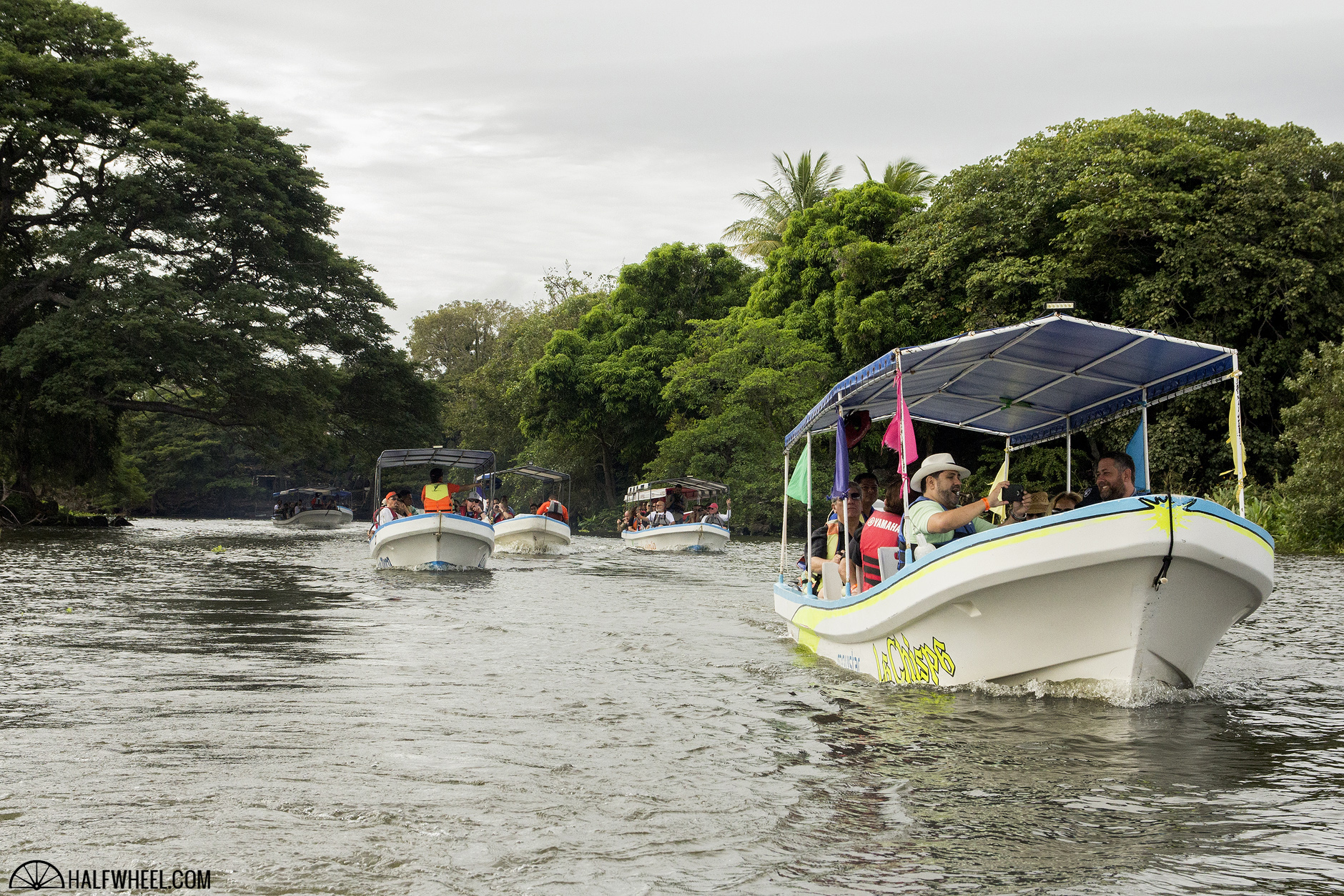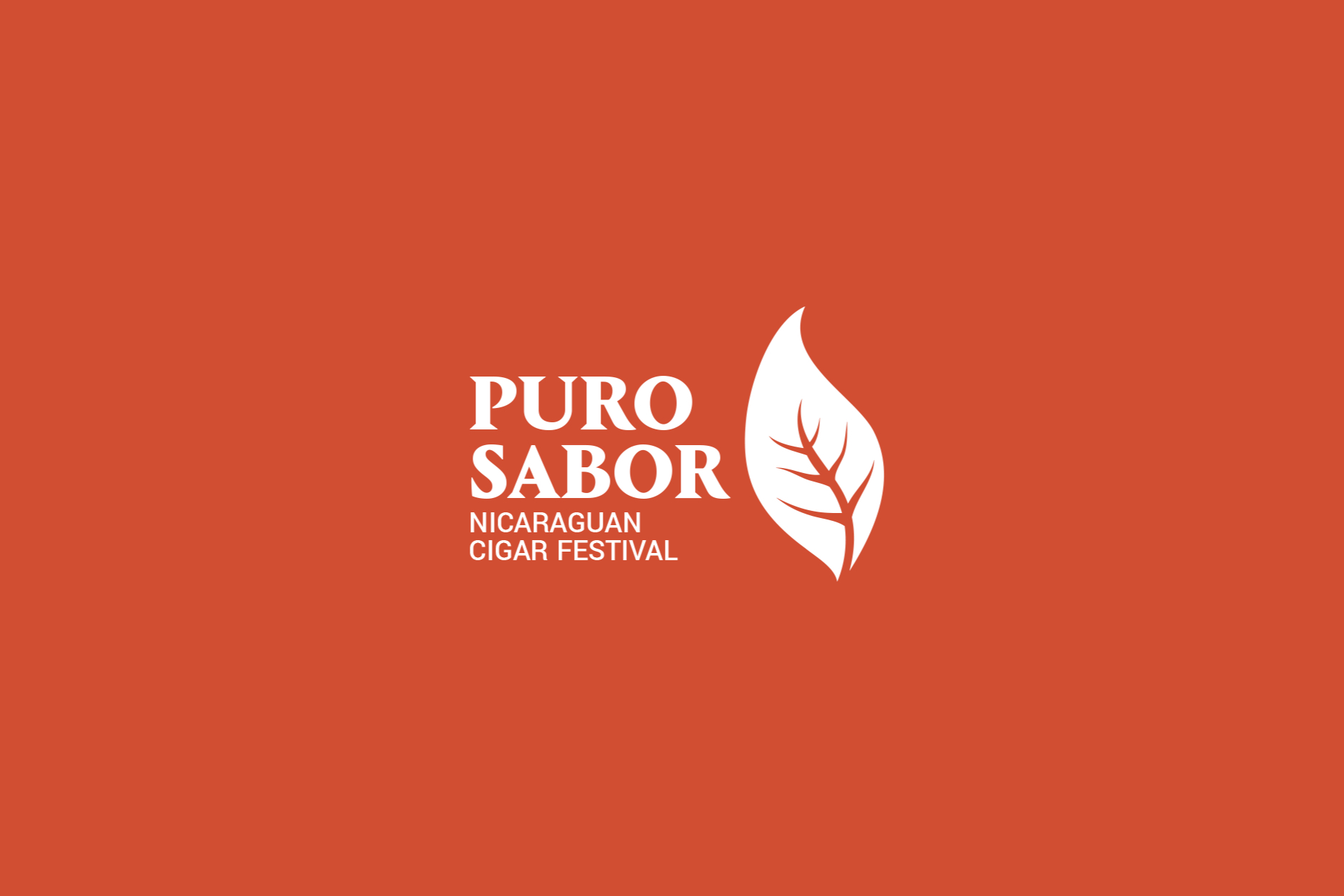I’m not exactly sure what it was, but I woke up Friday morning thinking that this week has gone way too fast. Not in the sense of you get older and time really starts flying, but that there simply weren’t enough hours in the day to see everyone I wanted to see, visit every farm and factory I wanted to visit, smoke every cigar I wanted to smoke and have every conversation I wanted to have.
So you’d understand if there was a bit more pressure to get things done today, something not inherently helped by a sense of sleep deprivation that’s probably shared by a good number of the attendees, but something certainly motivated by the ticking clock.
The day started with a trip to A.J. Fernandez’s facilities, a multi-faceted introduction to the company that included growing, processing and production. Things kicked off with a visit to the Finca La Lilia farm to see a bit of the process that goes into growing the kind of tobacco not only needed for premium cigars, but the kind of tobacco that Fernandez demands for his products. It’s acres and acres of tobacco for nearly as far as the eyes can see; the hills that surround Estelí are seemingly the only thing visible in the distance at some points.

Beyond that, it was incredibly refreshing to get back out into nature. This was—unintentionally—my only visit to a farm this week, something I probably should have realized prior to booking my group, though which got overlooked due to other priorities. It’s also one of the things that makes Puro Sabor a bit more challenging, in that you select a pre-programmed tour to be a part of as opposed to individual stops on a day-by-day basis. Were I attending as a regular participant, or even if it made sense in the context of the site, I’d be more inclined to visit farms every day, as that is where I have come to find the bulk of my interest residing as of late. But for someone who lives in the downtown area of a fairly big metropolitan area, getting the chance immerse myself in nature and growth—even for an hour—is certainly refreshing and I believe an overlooked opportunity on these tours.
If I may riff for a moment…there is an undeniable appeal to see the factories; there is noise, there is motion, there is something tangible in that there are cigars are being rolled right in front of your eyes—the same cigars that you might be smoking tonight at the party or when you get back home. It’s active, it’s bright, and there are people there to wave back at you, say hola to, and simply enjoy being with, even with a language barrier.
But then you get out to the fields, and for the most part, it’s just you and the tobacco. It’s quiet, almost disturbingly so in a world of likes, dings and buzzes in our pockets. Even for a very fast growing plant, the process is slow; you can’t watch it grow in the limited time these tours are afforded. It doesn’t let you know when a new priming of leaves have sprouted. It just does what it is going to do, lovingly guided by the people that care for it but can only do their best to stack the deck against Mother Nature and her whims. It is beautiful, it is peaceful, yet it is challenging. If it isn’t done right out here, it won’t be done right when it gets in there, the factory.
Riff over.
The visit was divided into four stops: newly sprouted seeds in beds, seedlings that were just recently transplanted into the ground, growing tobacco that was a few weeks into its life, and then tobacco in the curing barn, though given the current crop cycle there was nothing in the barn. If there is one thing that I enjoy under the people watching header, it is visits to the farm. Seeing people connect with nature is almost nothing short of remarkable; to see their cigar at its infancy is almost heartwarming.
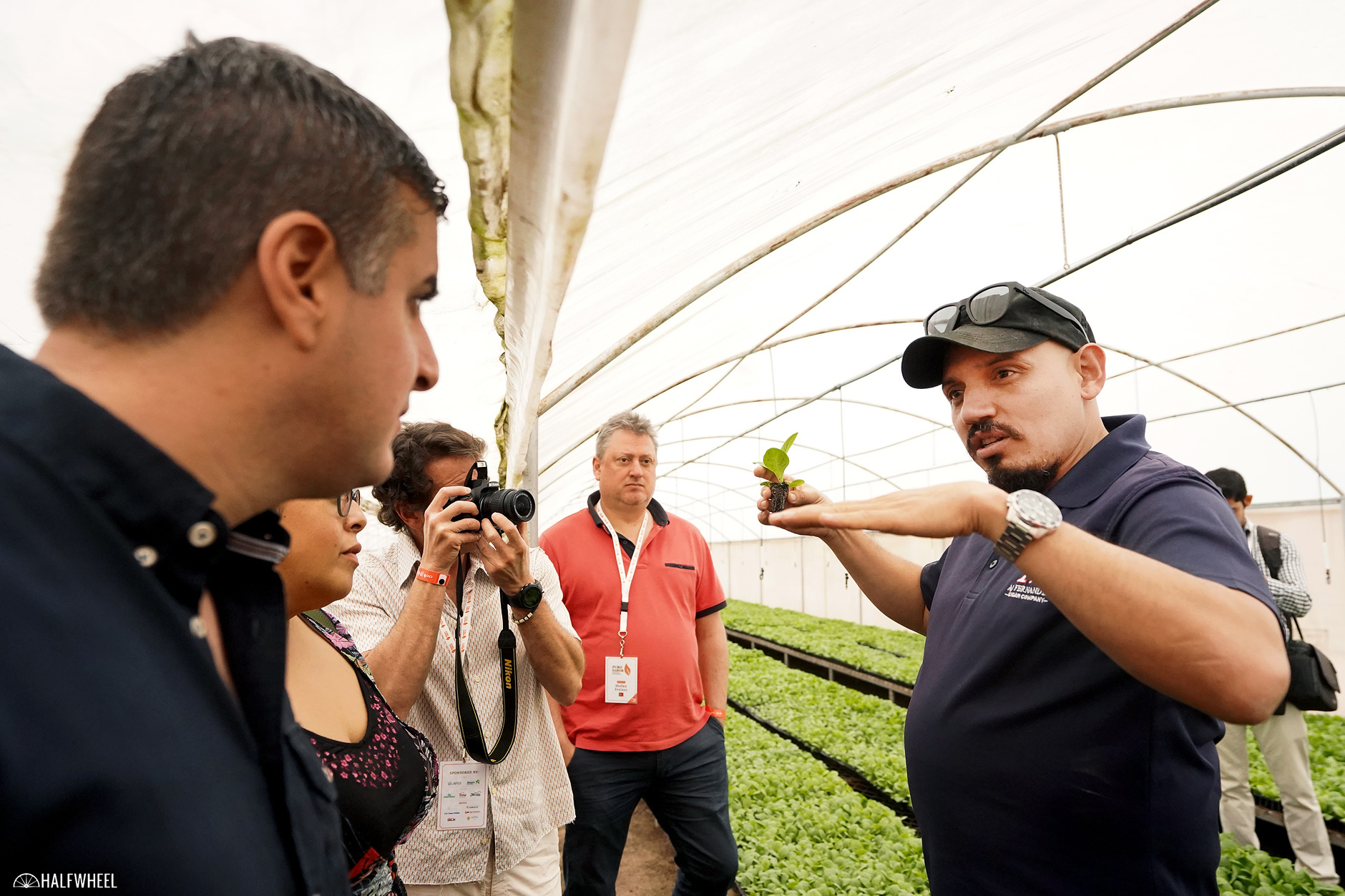
From there it was onto the factory to see what happens when tobacco arrives and begins its journey through fermentation, aging, preparation, sorting and rolling, then on through the post-rolling process of rest, sorting, packaging and shipping. It’s a tour that moves quickly but without rushing, and to see Abdel Fernandez interacting with the staff around the factory is certainly an added bonus, in addition to getting to ask him questions about his company, his cigars and his process.
My group didn’t have to travel far to lunch, as it was hosted by A.J. Fernandez at the guest house complex, a truly awe-inspiring home which Abdel uses to welcome visitors to the property. In the best sense of the word, it is lavish and impressive, from the grand entry to the room used for the lunch, then out to the pool, basketball court and beyond.
A few of us cut our lunch short so we could make a stop at the new Cigar Box Factory Estelí facility, which produces boxes for a litany of cigar companies. It, along with cigar band maker Cigar Rings, had originally been scheduled for my group’s final visit, but some unforeseen circumstances necessitated a change. So wanting to see the new facility, we hightailed it up the PanAmerican Highway for a quick visit, which I was incredibly impressed by. In some ways, seeing people cut, sand, assemble and paint wood might not sound exciting, but when you realize the amount of thought and labor that goes into cigar boxes, the natural result is to be incredibly impressed, and that’s before realizing that it is entirely done by hand.
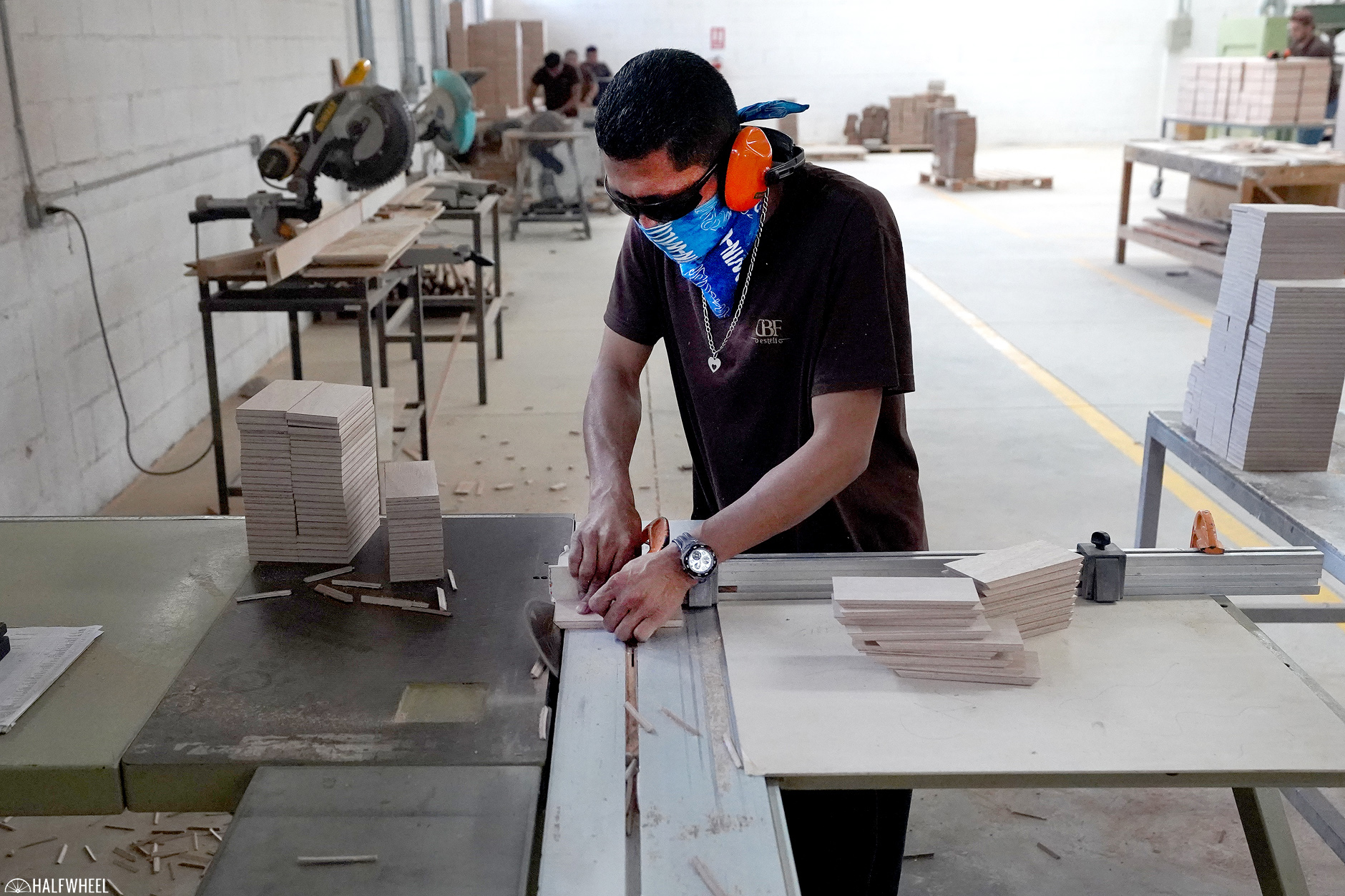
The other part that struck me was the amount of customization and personalization that can be done. Walk into Cigar Box Factory Estelí needing packaging and you’re greeted with a blank canvas; everything is seemingly on the table from the physical design to graphics and gloss to even personalized hinges, such as A.J. Fernandez uses. If you have an idea for how you want your cigars packaged, assuming it obeys the laws of gravity and physics, it would seem that Cigar Box Factory can bring it to life.

With a quick visit to Cigar Box Factory Estelí wrapped up, we hopped back on the highway to get to AGANORSA Leaf, one of a handful of factories that I had yet to visit but had been wanting to cross off for some time. Thankfully they had a few extra spaces available and I was able to join another group.
For this visit at AGANORSA Leaf, Terence Reilly was joined by Nicholas Melillo of Foundation Cigar Company, who makes a number of his lines at the factory. Earlier in the week, Dion Giolito of Illusione was in town and gave his take on the blending process, which I heard was quite an insightful and enjoyable time. Given that it was the last tour of the week, things were a bit more relaxed but attendees still got a thorough walkthrough of the production facilities, finished off by a tasting of two of the company’s signature tobaccos: criollo 98 and corojo 99.

As I have mentioned in other posts, if I can find one thing that’s unique to a factory, I am generally overjoyed. Given that we didn’t spend a lot of time exploring AGANORSA Leaf, the opportunities were a bit more limited, but a quick stop in the quality control room provided the opportunity to photograph something that I had seen elsewhere but had yet to be able to capture quite as ideally as I was able to here.
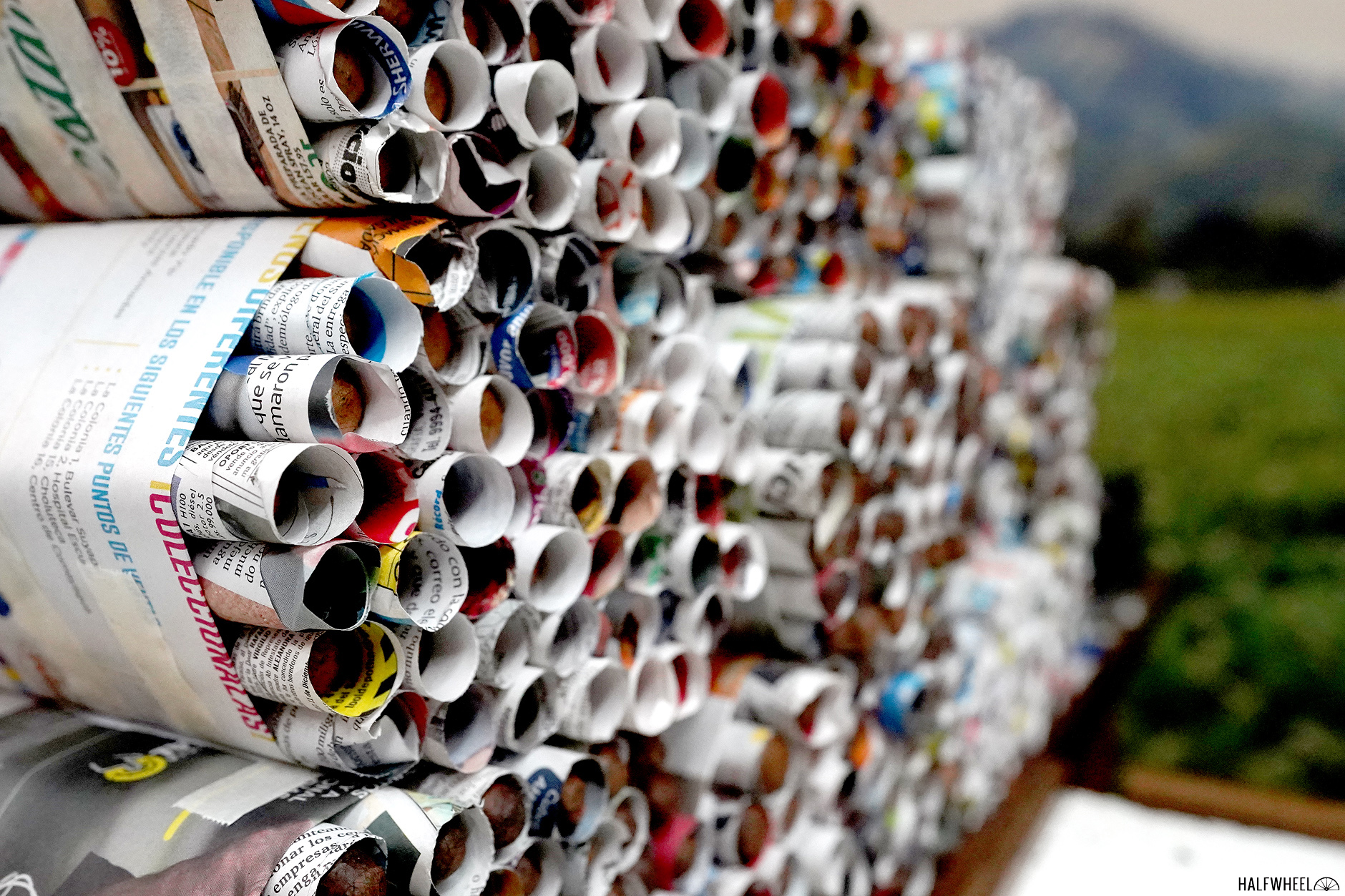
As you can see, the individual cigars are wrapped in newspaper, as well as the bundle of cigars as a whole. This is an decades-old—if not older—technique that is used to prevent wrinkling and shriveling of the wrapper leaf during the time after it is rolled, something that would affect the visual quality of the cigar. Only a handful cigars get this type of treatment, which makes it stands out in a sea of other cigars resting before beginning their journey out of the factory and into your hands. Not to mention that the random colors of the newspaper bring the technique to life; a visual that reminds me of a box of crayons whose beauty lies in the fact that they were put back in the box with no attention towards order.
The factory had prepared puritos of visos of both blends so visitors could get to experience the leaves on their own so they could get more familiar with what to expect from cigars that contain them. It was a unique experience for much of the group, smoking tobacco in the singular before pairing the two and then getting to pick a cigar to experience as a completed blend. If there was one session that seemed to benefit people when they go back to their local stores the most, it was this one.
Eventually the time came to pack up the van and head back to the respective hotels so that people could get packed up, cleaned up and dressed up for the closing dinner, generally the most elaborate night of the festival.
Keeping with the year’s theme of holding dinners at cigar factories, the closing event was held in one of the courtyards of STG Estelí, the factory that makes a number of General Cigar Co. products, including numerous CAO lines.
The dinner kicked off with the announcement that Claudio Sgroi of Mombacho Cigars will become the new president of the CNT, the Nicaraguan Tobacco Chamber, taking over for Anielka Ortez after her three years of service. I am excited to see what the incredibly vibrant and energetic Sgroi brings to the position in his two-year term, especially in light of his unique position with the Nicaraguan cigar industry.
From there it was on to a very enjoyable meal of Nicaraguan dishes, plenty of beverages to go around, and then dancing until it was time to shut things down at midnight, which happened to be just about an hour before Charlie and I would both need to head to the airport for an early morning departure—1am, if you were wondering, along with eight other festival goers.
Since this will be my last post—Charlie will have one more before we wrap this all up—I would be remiss if I didn’t take a moment to thank everyone who made this such an enjoyable time. First, the people who put on the festival deserve the utmost of thanks, including the staff of tour guides who are the primary contact for attendees and who do an absolutely amazing job handling all the things that are thrown their way. Their knowledge of the city and logistics, as well as patience with all the requests made of them, is something I doubt I could handle with such composure.
Then there are all of the people who mentioned that they are regular readers of halfwheel. I would attempt to name all of them, but I feel like Charlie would start the music and play me off stage like an awards speech gone too long. They are from all over the country and all over the world, and to know that they read our work is humbling. Thank you all for taking the time to say that first hello and continue the conversation in the subsequent days. Meeting so many wonderful people was certainly the highlight of the trip, and I look forward to seeing you again next year in Nicaragua, if not before.
Finally, to all the people that make the Nicaraguan cigar industry so vibrant: thank you for welcoming us into your country, your city and your facilities. Thank you for sharing your knowledge and your passion with those interested to learn about it. It is appreciated more than you can imagine.
We’ll have one more post wrapping up the festival and our journeys home, but in the meantime be sure to check out our Instagram feeds for more pictures, videos and thought about the festival. Charlie and I both have content on our own accounts, as well as on the halfwheel account.

